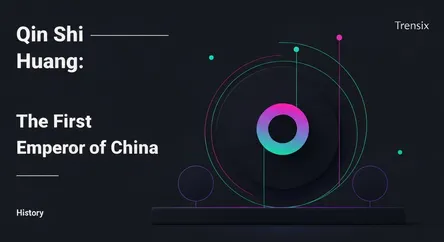History
Qin Shi Huang: The First Emperor of China

Discover Qin Shi Huang, the visionary and controversial first emperor who unified China, standardized its systems, and left a legacy of immense projects.
What is it?
Qin Shi Huang (259 BC - 210 BC) was the founder of the Qin dynasty and the first emperor of a unified China. Born Ying Zheng, he ascended to the throne of the Qin state at age 13 and took full control at 22. Through a series of successful military campaigns, he conquered the six other warring states, unifying China in 221 BC and ending centuries of conflict. He then created the new title of "Huangdi" or Emperor, proclaiming himself "Qin Shi Huang" to signify his supreme power and the start of a dynasty he believed would last for 10,000 generations.
Why is it trending?
Qin Shi Huang's reign continues to be a topic of immense interest due to his monumental and enduring achievements. His most famous legacies, the Great Wall and the thousands of life-sized Terracotta Warriors guarding his tomb, still captivate global attention. He implemented sweeping reforms, standardizing the writing system, currency, weights, and measures across his empire. This standardization was crucial for unifying the diverse cultures and economies of the former states. His centralized administrative and bureaucratic system became the foundation for governance in China for the next two millennia.
How does it affect people?
Qin Shi Huang's unification of China fundamentally shaped the country's identity and political landscape. The standardization of the written script created a lasting cultural cohesion that transcended regional dialects. His construction of a vast network of roads and canals spurred trade and communication. However, his rule was also marked by brutality; he used forced labor for his massive construction projects, leading to immense suffering, and suppressed opposing philosophies like Confucianism by burning books and executing scholars. This dual legacy of a visionary unifier and a ruthless tyrant makes him one of history's most complex and debated figures.